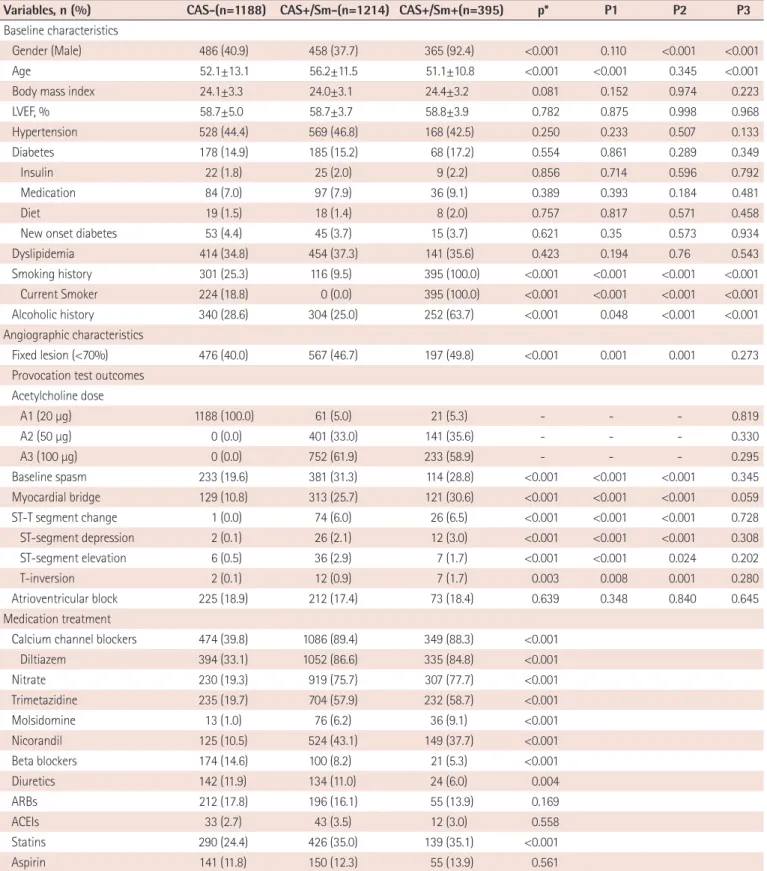Korean Circulation Journal
Print ISSN 1738-5520 • On-line ISSN 1738-5555
Introduction
Cigarette smoking is a strong risk factor in coronary artery spasm (CAS), a well-known endothelial dysfunction. CAS plays an important role in the pathogenesis of vasospastic angina (VSA) and acute coronary syndrome (ACS); it also seems to be associated with other adverse clinical outcomes.
1-3)Several theories suggest that CAS could initiate atherosclerotic lesion development in the coronary artery.
4)Due to its strong association with endothelial dysfunction, cigarette smoking is known to markedly increase the risk for all forms of cardiovascular diseases such as atherosclerosis,
Impact of Cigarette Smoking: a 3-Year Clinical Outcome of Vasospastic Angina Patients
Byoung Geol Choi, BS 1 , Seung-Woon Rha, MD 2 , Taeshik Park, MD 3 , Se Yeon Choi, BS 1 , Jae Kyeong Byun, MS 1 , Min Suk Shim, BS 2 , Shaopeng Xu, MD 2 , Hu Li, MD 2 , Sang-Ho Park, MD 4 , Ji Young Park, MD 5 , Woong Gil Choi, MD 6 , Yun-Hyeong Cho, MD 7 , Sunki Lee, MD 2 , Jin Oh Na, MD 2 , Cheol Ung Choi, MD 2 , Hong Euy Lim, MD 2 , Jin Won Kim, MD 2 , Eung Ju Kim, MD 2 , Chang Gyu Park, MD 2 , Hong Seog Seo, MD 2 , and Dong Joo Oh, MD 2
1

